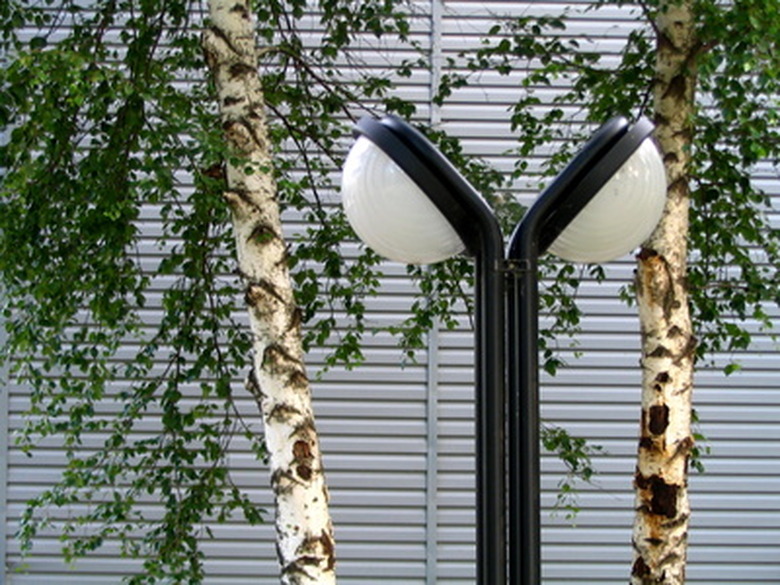Disease Of Birch Trees
Birch trees bring to mind river banks and northern forests but when planted in suburban lawns, they need extra care. Several diseases of betula species and two insects that capitalize on them make many birch species high-maintenance choices for residential lots. Choosing the right variety of this charming tree is the first step in keeping it healthy.
Identification
Most birch trees grow 40 to 50 feet tall and have heart-shaped leaves that turn yellow in fall. Paper birch and river birch grow in attractive clumps, making them popular landscape trees. White birches are more resistant to birch borers, the tree's most dangerous insect adversary. Birches prefer cool, moist environments, thriving from the forests of Siberia to the great rivers of the American Midwest.
- Birch trees bring to mind river banks and northern forests but when planted in suburban lawns, they need extra care.
Diseases of Leaves
Leafspots are parasitic infections of leaf margins by fungi and bacteria spores that are carried by rain, fog or dew. It primarily affects trees that are crowded or grow in shade or low areas. Scorch dries the outer portions of leaves; it occurs when leaves do not get enough water during hot, dry periods or when roots are exposed to salt because trees are planted close to a street where road salt is used.
If the drought is long enough or salt exposure severe, entire leaves die. Chlorosis causes foliage to yellow prematurely; it is caused by alkaline soil or by lack of minor nutrients like iron or manganese.
Fungal Diseases
Birch trees are susceptible to a number of fungal infections that will rot the center of the tree's trunk and branches in a disease called "heart rot". Infections of Fomes fomentarius, Daedalia species and Polyporus squamosus fungi occur most often when a tree is injured, pruned too severely or develops a "conk," a fungus growth on the trunk.
- Leafspots are parasitic infections of leaf margins by fungi and bacteria spores that are carried by rain, fog or dew.
- Scorch dries the outer portions of leaves; it occurs when leaves do not get enough water during hot, dry periods or when roots are exposed to salt because trees are planted close to a street where road salt is used.
Decline
Birch "decline" is a disease without a known cause. Trees in decline often have experienced drought, root damage or other forms of stress. They often exhibit conks. Decline is characterized by dying branches in older trees.
Insects and Disease
The bronze birch borer and leafminer attack trees already weakened by disease or decline. Of the two, the birch borer can finish the job begun by heart rot, canker fungi or general decline. Leafminers cause cosmetic damage but also weaken the tree, reducing resistance to birch borer and diseases.
- Birch "decline" is a disease without a known cause.
- The bronze birch borer and leafminer attack trees already weakened by disease or decline.
Prevention
The best way to avoid diseases is to practice good birch culture. In addition to planting a variety appropriate for your hardiness zone, trees need open sun and moist soil. Soil should be well-drained and slightly acid with a pH of 5.0 to 6.5. Use natural, non-reflective mulch like wood; limit fungus growth at the tree's base by keeping mulch way from the trunk.
Deep weekly watering keeps roots healthy; fertilize the tree only when needed with slow-release nitrogen fertilizer. Prune trees lightly in late fall or early spring; they should never be pollarded ("topped"). Never prune during birch borer flight season from May 1 to August 1.
- The best way to avoid diseases is to practice good birch culture.
- Deep weekly watering keeps roots healthy; fertilize the tree only when needed with slow-release nitrogen fertilizer.
